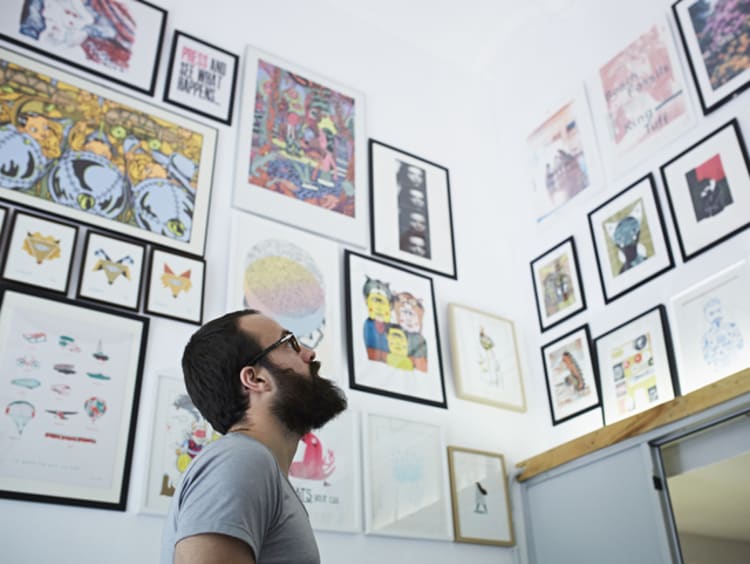How To Start a Print-On-Demand Business As a Designer

Have you ever dreamed of selling your designs or artwork? Do you have a noteworthy idea for a product but are unsure about how to make it a reality? Are you overflowing with creativity and drive but limited by your funds?
If you answered “yes” to these questions, starting a print-on-demand business may be right for you.
What Is Print On Demand?
Print on demand is an alternative to a mass-production business model. In a print-on-demand model, rather than printing a certain number of items and waiting for them to sell, products are printed as they are purchased or as the demand increases.
This model can allow designers and artists to distribute their designs and ideas on the market without investing a substantial amount of money. Designers can offer their work on many products and partner with a variety of print-on-demand production services or companies to start a print-on-demand business.
How To Start a Print-On-Demand Business
Explore these steps and tips on starting a print-on-demand business:
1. Develop Ideas and Designs
If you’re an experienced designer, you may already have designs you would like to use in a print-on-demand shop. Whether or not you have experience in graphic design, you may want to start your print-on-demand journey by brainstorming ideas and creating designs. This allows you to develop your style and discover what you like to create and how you design.
For example, if you’re inspired to create a collection of multicolored leaf designs, you might practice florals and leaves in a way that will be visually appealing on your products. Perhaps you enjoy drawing cars and motorcycles. You could use that skill to create designs featuring vintage transportation.
2. Decide What Products to Offer
Once you have an idea of what you want to create, you have to decide what products you want your designs to be printed on. For example, you might create stylish children’s T-shirt designs, or maybe you’d prefer to design comical coffee mugs.
Here are some products you might choose to customize and sell in a print-on-demand shop:
- T-shirts
- Hoodies
- Stickers
- Posters
- Cups
- Posters
- Masks
- Cards
- Blankets
- Hats
- Wall decor
- Phone cases
These are just a few of the many products designers can sell using print-on-demand websites.
3. Choose the Right Site
You can set up a shop on many print-on-demand websites to start selling your designs. Do research to make sure you choose a website that offers print-on-demand options tailored to your needs and wants.
For example, some websites may allow you to set up a shop for free, while others may charge a fee. Some websites specialize in making clothing, and others might offer other products, such as metal prints or bedding. You should also pay attention to how your products will be marketed by the site. In addition, know that each website’s target audience or style could help your business.
Consider the user experience of the print-on-demand company you choose. Is it easy to navigate and use, for both you and your customers? Do many people use the website, leading to more traffic for your designs?
Another aspect you may consider when choosing a print-on-demand service is its ethical policy or environmental impact. These e-commerce platforms may have different practices in place and, as a designer, you can consciously choose to check their practices before giving them your business. Some common print-on-demand sites for graphic designers include:
- Teepublic
- Zazzle
- Redbubble
- Society6
- Printful
Learn as much as you can about how the site you choose works so that you will know how to use the features and what the buyers of your designs can expect.
4. Upload Your Work
Once you have some designs and have started your account on a print-on-demand website, you will need to upload your work. This will allow you to have something on the site for people to purchase. After people see your uploaded work and decide to purchase it, the printing process for your product will begin.
5. Share Your Shop
As in any small business, it’s important to market and spread the word about your print-on-demand shop. Consider sharing your shop and products on social media or sending the link to your friends and family. Promote your designs to attract more people to your work.
Here are some ways to share your small business:
- Join Social Media Groups: One way to spread the word about your business is to share your work in social media groups. For example, if you design stickers inspired by gymnastics, you might share your business on a social media group for gymnasts.
- Tell Friends and Family: Don’t underestimate the power of your friends and family. They may be willing to help you spread the word about your shop by telling their friends.
- Upload Regularly: Starting the habit of uploading regularly can help increase the chances of people seeing your shop as you will have more designs and artwork to appeal to them.
6. Persevere With Patience
Success after starting a print-on-demand business will probably not come instantaneously. It may take some time to start earning money on such a platform. However, if you stop uploading designs after a week because you don’t yet have sales, you’ll never succeed. You need to be willing to put in the work and persevere as you wait for results in your business.
How a Graphic Design Degree Can Benefit You
For those who want to create and start a print-on-demand business, a bachelor’s degree can be a helpful investment. A graphic design degree program can give you the skills needed to not only create designs but also come up with high-quality concepts that can help increase the success of your shop. Another option is to get a major or minor in entrepreneurial studies to complement your art and design skills.
Grand Canyon University’s College of Arts and Media offers a variety of creative degrees to help you develop your skills, including our Bachelor’s of Arts in Advertising and Graphic Design. To learn more about our online or on-campus degree programs, click on the Request Info button at the top of the screen.
The views and opinions expressed in this article are those of the author’s and do not necessarily reflect the official policy or position of Grand Canyon University. Any sources cited were accurate as of the publish date.


